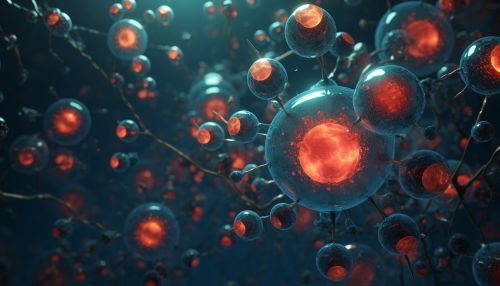Cell Migration
Introduction
Cell migration is a central process in the development and maintenance of multicellular organisms. Tissue formation during embryonic development, wound healing and immune responses all require the orchestrated movement of cells in particular directions to specific locations. Errors during this process have serious consequences, including intellectual disability, vascular disease, tumor formation and metastasis. An understanding of the mechanism by which cells migrate may lead to the development of novel therapeutic strategies for controlling, for example, invasive tumor cells.
Mechanisms of Cell Migration
Cell migration is a complex process that is vital for the development and survival of multicellular organisms. It is a process that involves the coordinated movement of cells from one location to another. The process of cell migration is complex and involves many different cellular components. These include the cytoskeleton, which forms the structural framework of the cell, and adhesion molecules, which allow cells to attach to each other and to the extracellular matrix.


Cytoskeleton
The cytoskeleton is a dynamic structure that can change its organization and function in response to cellular needs. It is composed of three main types of protein filaments: microtubules, intermediate filaments, and actin filaments. These filaments are involved in a variety of cellular functions including cell shape, cell movement, and cell division.
Adhesion Molecules
Adhesion molecules are proteins located on the cell surface that allow cells to adhere to each other and to the extracellular matrix. These molecules play a crucial role in cell migration by providing the physical link between cells and their surrounding environment, and by transmitting signals that regulate cell motility.
Types of Cell Migration
There are several types of cell migration, including chemotaxis, haptotaxis, durotaxis, and electrotaxis. Each of these types of migration is characterized by the movement of cells in response to a specific type of stimulus.
Chemotaxis
Chemotaxis is the process by which cells move in response to a chemical gradient. This type of cell migration is critical for many physiological processes, including the immune response and wound healing.
Haptotaxis
Haptotaxis is the movement of cells in response to the gradient of adhesion sites. This type of cell migration is important in the development of tissues and organs.
Durotaxis
Durotaxis is the movement of cells in response to a gradient of substrate stiffness. This type of cell migration is involved in many biological processes, including embryonic development and cancer metastasis.
Electrotaxis
Electrotaxis is the movement of cells in response to an electric field. This type of cell migration is involved in wound healing and development.
Role in Disease
Abnormal cell migration is a key factor in the development of many diseases, including cancer, cardiovascular disease, and chronic inflammatory diseases. Understanding the mechanisms that regulate cell migration may lead to the development of new therapeutic strategies for these diseases.
Cancer
In cancer, abnormal cell migration and invasion are key steps in tumor metastasis. Cancer cells often acquire the ability to migrate and invade other tissues, leading to the spread of the disease.
Cardiovascular Disease
In cardiovascular disease, the migration of smooth muscle cells and endothelial cells plays a key role in the development of atherosclerosis. These cells migrate into the arterial wall, leading to the formation of plaques that can block blood flow.
Chronic Inflammatory Diseases
In chronic inflammatory diseases, such as rheumatoid arthritis and asthma, the migration of immune cells into tissues can lead to inflammation and tissue damage.
Conclusion
Cell migration is a complex process that is crucial for many biological processes, including development, wound healing, and immune responses. Abnormal cell migration can lead to a variety of diseases, including cancer, cardiovascular disease, and chronic inflammatory diseases. Understanding the mechanisms that regulate cell migration may lead to the development of new therapeutic strategies for these diseases.
